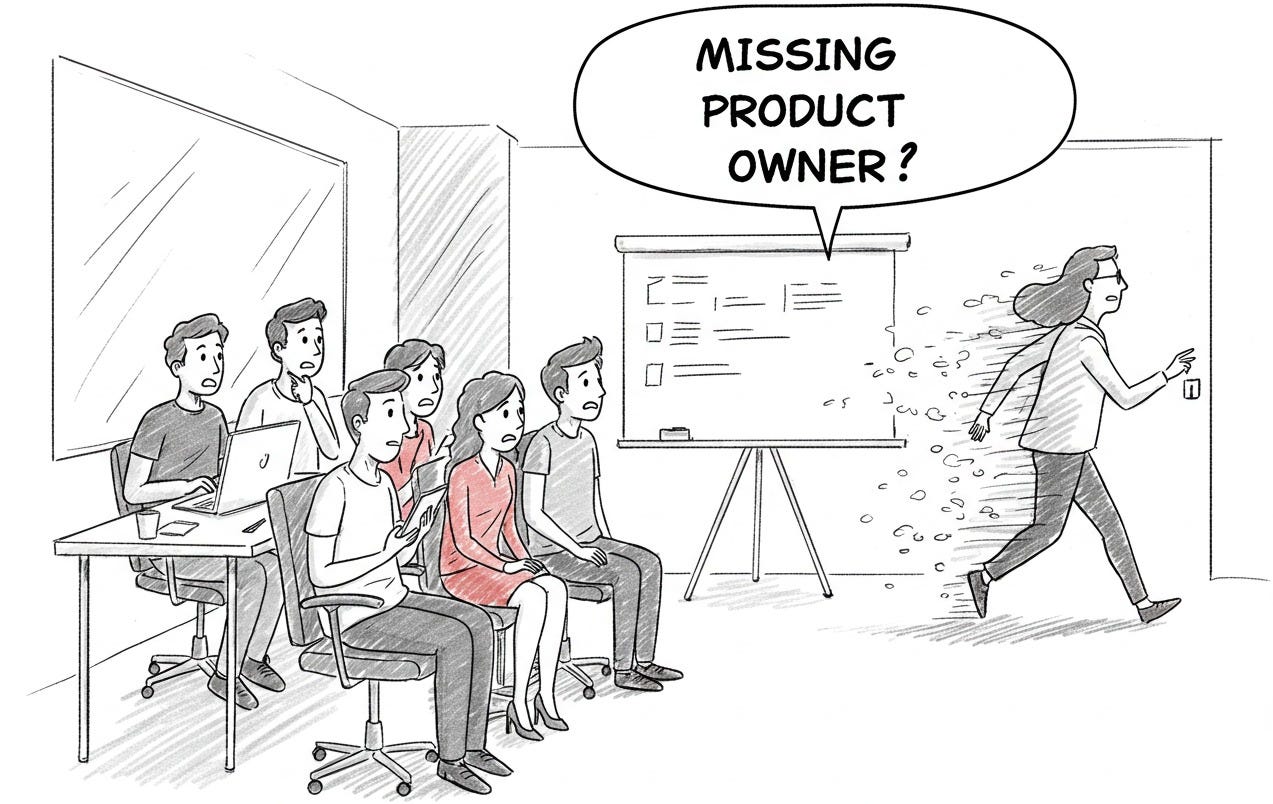How to Handle Product Owner's Limited Availability
How would I approach PO unavailability problem?
Hello 👋, It’s Vibhor. Welcome to the 🔥 paid member only🔥 edition of Winning Strategy: A newsletter focused on enhancing product, process, team, and career performance. Many subscribers expense this newsletter to their Learning & Development budget. Here’s an expense template to send to your manager.
Q: I’m facing a challenge with our Product Owner’s limited availability. She’s juggling multiple products and can only join our Scrum events sporadically. As a result, devs have to wait for clarifications, backlog refinements are slow, and risky assumptions are being made. How can I secure more consistent engagement from my Product Owner without coming across as confrontational?
I’ve been there, and I know how frustrating it can be.
A part-time Product Owner is worse than no Product Owner at all.
After years in the trenches, I'm tired of organizations pretending they're "doing Scrum" while setting their teams up for failure with overallocated POs who can barely make it to Sprint Planning.
I've heard every excuse in the book.
"We're a small company."
"We can't afford dedicated POs."
"Our POs need to handle multiple products because they're so experienced."
Stop it!
If you can afford a development team, you can afford proper Product Ownership. If you can't, you have a business model problem.
Overallocated PO isn't saving the company money. They're burning it. They're just doing it slowly enough that nobody notices until the project goes off the rails.
It’s a challenging situation.
But… there are ways to navigate around it.
In this post, I will outline the steps I took when I encountered this problem. You will learn how to:
highlight the impact of the PO’s absence
negotiate a minimum level of availability
help the team find answers when the PO is absent
And all this without sounding like you are blaming your PO.
Let’s get started.
Clarifying Questions
These are the questions I would ask myself (or will find answers for) before jumping to solutions.
You must understand the full picture. Each organization is different, and each Product Owner has their constraints.
These questions will help you stay objective.
When you are clear about what’s going on, you can help the team in a way that’s fair to everyone, including the Product Owner.
Here's the first question.
Question #1:
How frequently is the PO present in each Scrum event?
Understanding your PO’s current attendance will help you identify the gaps. It will help you determine which events require the most attention. It will also tell whether you can reschedule or shorten certain meetings.
Example answers:
They attend Sprint Planning and Review, never Daily Scrums, and occasionally join Refinement
Comes to the Sprint Review only
Daily Scrum once or twice a week, but skips everything else
Let’s say she joins Sprint Planning and Review, never participates in Daily Scrums, and occasionally attends Refinement.
Let’s move on.
Question #2:
How confident are the Developers today in clarifying requirements on their own?
Do they feel comfortable slicing stories, defining acceptance criteria, and making scope decisions in the absence of the PO?
A mature team can operate effectively with minimal guidance. A less experienced team will need tighter PO involvement or a dedicated proxy.
Example answers:
They’re experienced; they’ve shipped this product for years and can usually fill in the blanks
They can define technical tasks but struggle to make business-side trade-offs
They’re new to both Scrum and the domain, so they rely heavily on the PO for every detail
Let’s say they can define technical tasks but struggle to make business-side trade-offs.
Question #3:
What level of support do you already have from upper management regarding the PO’s availability problem?
If leadership is already aware, the strategy will mainly be about presenting data and solution options.
If they see no issue, you will need a stronger evidence based case. Their view also influences whether we aim for a structural change (dedicated PO) or a workaround.
Example answers:
Leadership hasn’t noticed. They think everything’s okay
They know she’s overallocated but haven’t prioritized fixing it yet
They’ve asked you to propose a solution because they can see it’s causing delays
Let’s say they know she’s overallocated but haven’t prioritized fixing it yet.
Question #4:
What is your current Sprint length, and how often does work get blocked waiting for PO input during a Sprint?
A shorter Sprint can amplify the pain of slow decisions. A longer Sprint may hide it.
Quantifying the number of items blocked per Sprint will provide us with data to show management. It will also help


